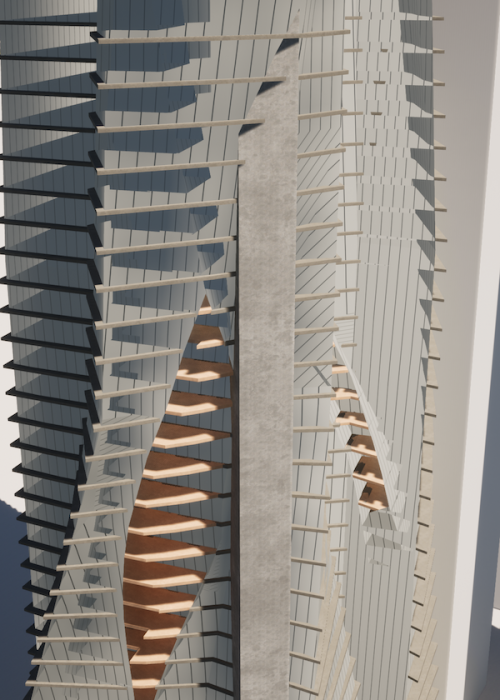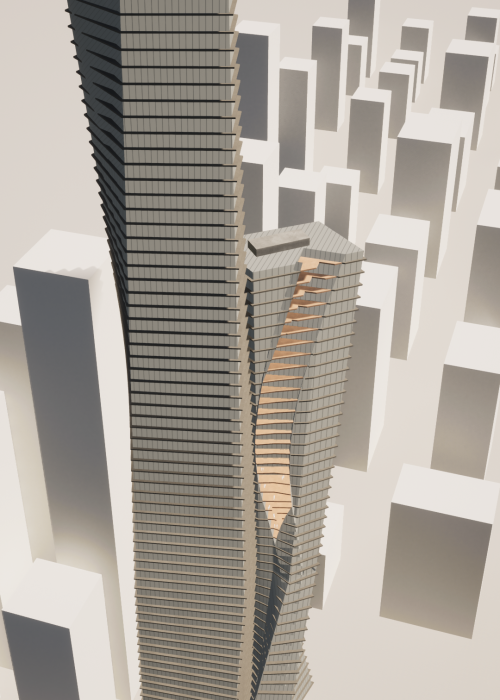GENETIC AESTHETICS
ARCHITECTURAL INNOVATION THROUGH EVOLUTIONARY PROCESSES
Jan 2021 – Feb 2021
Category: Architectural Design, Computational Design
Featured in: AA EmTech Project Review 2021/2022
Director: Michael Weinstock

Genetic algorithms (GAs), inspired by evolutionary principles, offer a promising approach to navigating the intricate design spaces inherent in computational architecture. By mimicking the process of natural selection, GAs efficiently sift through vast possibilities to uncover optimal design solutions. While traditionally applied in engineering optimization, recent years have seen their integration into architectural design, particularly within the realm of generative design. This scholarly exploration delves into the application of genetic algorithms in addressing complex design challenges, with a focus on the iterative evolution of architectural solutions.
- Exploration of genetic algorithms in architecture and urban planning.
- Unfolds through a series of controlled experiments, each designed to probe different facets of computational architecture design.
SEQUENCE 1: MULTI-OBJECTIVE OPTIMIZATION
This sequence involves meticulously setting up experiments, executing them, analyzing results, and discerning optimal solutions. Through this initial phase, researchers lay the groundwork for subsequent experiments, gaining valuable insights into the evolutionary dynamics of design solutions.
SEQUENCE 2: REDESIGNING WILLIS TOWER
Building upon insights from Sequence 1, the focus shifts to the Willis Tower in Chicago. Evolutionary algorithms are tailored to address the tower’s existing challenges, with criteria, body parts, and genetic pools specifically configured for this task. Two parallel experiments unfold, each tackling distinct aspects of the tower’s design – morphology and architectural structure. Through iterative experimentation, researchers aim to enhance both the aesthetic and functional aspects of the tower.
SEQUENCE 3: EXTENDING TO URBAN CONTEXTS
In this final sequence, the scope expands to encompass urban contexts, presenting a new set of challenges and opportunities. The application of evolutionary algorithms to urban design necessitates a nuanced understanding of spatial dynamics, environmental considerations, and community integration. Despite encountering challenges in scaling the approach, researchers persevere, recognizing the potential of genetic algorithms to inform holistic urban planning strategies.













